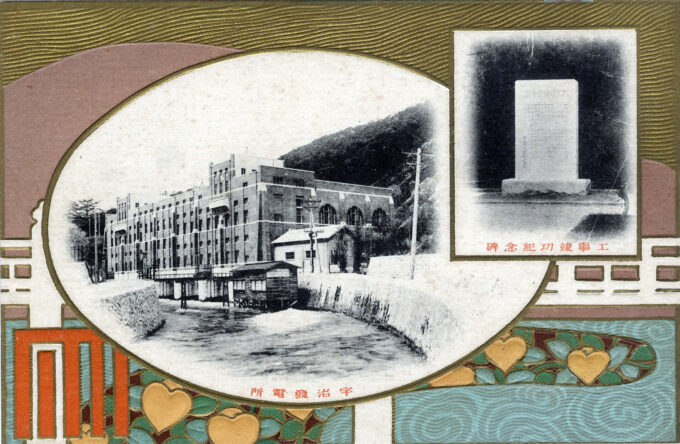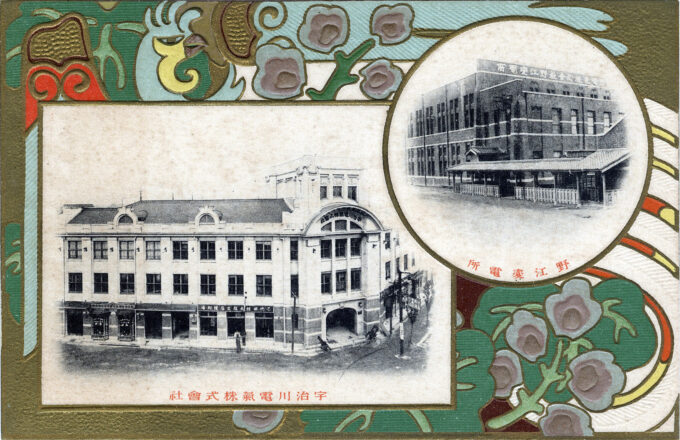
Main generating plant and sluice channel, Shizugawa Generating Station, Uji-gawa Electric Power Co., Uji City, Kyoto Prefecture, c. 1920. Uji-gawa Denki was founded in 1906 and grew to become one of the “Big Five Power Companies” in Japan before the Pacific War by supplying electricity to customers in the Kyoto-Osaka region. The company’s first hydroelectric generating plant was this facility which began operating on the Shizugawa in 1913. It was removed from the power grid in 1964 with the opening of the larger Amagase generating facility a bit downriver at Amagase.
See also:
Japan Electrical Exhibition, Ueno Park, Tokyo, 1918.
Osaka Electrical Exhibition, Osaka, 1926.
“In the mid-Meiji period, industrialization in Japan progressed against the backdrop of [modernization] and the demand for electricity also increased. At the time, electricity was mainly supplied by thermal [fossil-fuel] power plants in large urban areas where there was demand, but demand was not being met.
“In the 1900s, a new method of power generation emerged, in which large hydroelectric power plants were built in mountainous areas with the electricity transmitted to urban areas over long-distance high-voltage transmission lines. Plans were drawn up to build hydroelectric power plants in the Uji River system upstream of the Yodo River to supply electricity to urban areas of the Kansai.
“Ujigawa Electric Co., Ltd. was established in Kyoto in 1906. Tokugoro Nakahashi became president, Doi Michio, Matsudaira Iwatani, Bunpei Takagi, and Matazo Azami were directors, and Ichibei Tanaka , Kihachiro Okura , and Gentaro Tanaka were auditors. In 1913, the Uji Hydroelectric Power Plant (Ujiyamada, Uji City) was completed and began supplying electricity to the Kyoto-Osaka area.
“Uji Electric concentrated on supplying electricity to relatively large customers, securing demand by concluding an electricity supply agreement with Osaka City. In Kyoto, there was competition with the city-owned utility; in the end, the matter was settled by dividing the supply area between the two.
“In 1942, the National Mobilization Law led to the reorganization of the five regional power companies into one nationally-managed concern plus nine distribution systems.”
– Wikipedia
- Uji-gawa Electric Power Co., Shizugawa Generating Station, Uji City, Kyoto Prefecture, c. 1920.
- Uji-gawa Electric Power Co., Shizugawa Generating Station, Uji City, Kyoto Prefecture, c. 1920.



